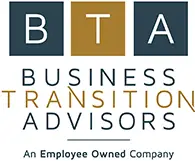BY J. CRAIG ANDERSON STAFF WRITER – Pressherald.com
There are risks, but independent construction firms see even bigger advantages in ESOPs – employee stock ownership plans – to pass the business on.
Wright-Ryan Construction in Portland has joined a growing list of construction firms to tackle the challenge of succession by selling the company to its employees.
Wright-Ryan completed the transition to employee ownership through the creation of an employee stock ownership plan, or ESOP, this month. Another firm, Scarborough-based Landry/French Construction Co., created its own ESOP in May. And Warren Construction Group, a 40-person firm in Freeport, made the transition in July.
“We saw this as an opportunity to think about more than just the sustainability and longevity of our company,” said John Ryan, Wright-Ryan’s co-founder and president. “It was a chance to look at the future of the industry in our region and ask ourselves what we could continue doing to make a career in construction an attractive, viable option.”
ESOPs, which involve the creation of a trust for employees that serves as a retirement benefits plan, historically have not been prevalent in the construction industry. But financial advisers say ESOPs have grown in popularity because, while they do involve certain risks, they can solve key problems for mature, family-owned construction firms.
Despite some consolidation, the construction industry remains extremely fragmented and is dominated by relatively small local and regional companies across the country. Nearly all are privately owned.
When the owners of a construction firm start to contemplate selling the company, they often find there are few interested buyers at the price that they believe reflects the company’s true value. Industry experts said construction firms can be difficult to valuate because the industry is highly cyclical, often with sharp ups and downs every few years.
Also, the founders usually want to ensure that the company’s name, culture and staff remain intact, they said.
Selling to a competitor puts their future at much greater risk, while a sale to internal management can be cost-prohibitive for the buyers. Using an ESOP solves those problems.
“The only reason that I can see construction companies leaning toward ESOPs is that they typically have a hard time finding a third-party buyer,” said Jeannine Pendergast, vice president and senior ESOP adviser at Spinnaker Trust in Portland. “If they do, often they will not keep the company intact. They will take jobs out of the state, eliminate the name, etc. An ESOP is a way to keep the legacy and the culture of the company.”
WHAT IS AN ESOP?
An employee stock ownership plan does not transfer ownership of a company directly to its employees. Instead, a trust is established with a board of directors made up of employees. The owner sells the company to the trust and is either paid through a loan taken out by the company or over time with company profits.
Employees vested in the ESOP can liquidate their shares after they leave the company or retire, and that money is paid out to them over time in a manner similar to a retirement account.
Pendergast noted that an ESOP is riskier for employees as a retirement vehicle than a 401(k) plan and should not be considered a viable replacement.
“It should not be relied upon due to the fact that it is primarily invested in the employer stock. If something happens to the company, the account is worthless,” Pendergast said.
“Many companies, when they sell to an ESOP, keep their current 401(k) and encourage employees to continue contributing.”
Still, Ryan said having an ESOP is a substantial employee perk that makes working for the company more desirable and motivates existing staff to ensure the company’s future success.
He said it was important to Wright-Ryan to reward the employees who helped the company become successful, while attracting new talent and strengthening the firm’s dedication to customer service.
“We already have an ownership culture at Wright-Ryan, with employees operating like owners, and a business philosophy defined by collaboration and transparency,” Ryan said.
“The ESOP takes that to the next level.”
TAX ADVANTAGES AND RISKS
There are significant benefits to selling a construction firm to an ESOP, and also some risks, according to financial advisers. For that reason, ESOPs are discussed frequently on construction trade association websites and at industry conferences.
According to an article published by trade publication Construction Business Owner, there are tax advantages to selling a construction firm to an ESOP that benefit both the seller and the company.
“The ESOP is an economical buyer of company stock because tax deductions are available for the transaction costs related to buying the stock – even when the money is borrowed to make the purchase,” said article author Robert Massengill of national ESOP advisory firm SES Advisors.
“This is quite different from an inside sale to management or an outside sale to a third party, where the costs of the transaction are paid with after-tax cash.”
But there are also risks.
An important component of a construction company’s business is its ability to obtain surety bonds, especially for firms working on public works projects, according to the National Center for Employee Ownership. The bonds are often required before a firm can be chosen for certain projects.
“Before a surety company will issue a surety bond, it must be satisfied that the contractor runs a well-managed, profitable enterprise, deals fairly, and performs obligations as agreed,” said surety bond expert Robert Wrixon, writing for the NCEO. “Underwriting considerations include the capital and cash flow of the business to support the surety program as well as the continuity of the principals and the management team.”
If a construction firm becomes too highly leveraged to pay for its ESOP, or its cash flow becomes too low, that can look bad to the underwriters and make it difficult to obtain the bonds, he said.
Pendergast said that because surety bonds are such an important issue for construction firms, it is doubtful that a company would set up an ESOP sale in a manner that would jeopardize its ability to secure the bonds.
Still, she said it can make the company more vulnerable to future, unfavorable shifts in the business environment.
“I am sure that is probably one (issue) that business owners have on the top of the list, so I assume that one is clearly addressed – in the short term,” she said.
“But if things start to go awry, then you have problems.”
Ryan, who is 62 but said he has no plans to retire, said his company structured the ESOP sale carefully to ensure there would be no threat to its ability to obtain surety bonds. Wright-Ryan did not take out a loan to pay for the ESOP. Instead, Ryan said he is acting as creditor and is offering flexible payment terms to account for peaks and valleys in company revenue. He would not disclose the sale price.
“On the commercial side of our business, surety is really part of our lifeblood,” he said.


